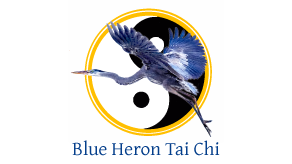The other day, Jaqui reminded me that years ago I referred to Chen Man-Ching’s T’ai Chi form as Inferior T’ai Chi. I apologize profusely.
I can only hope that Jaqui can forgive said comment as the off hand remark of a testosterone laden and obviously much less wiser impetuous boy. You know, once upon a time I used to think driving noisy motorcycles around the neighborhood was a pretty cool thing. Now not so much.
One of the things I’ve learned lately is that it doesn’t matter what T’ai Chi Form you choose to follow, you will never be able to exhaust the lessons it has to teach you. Various T’ai Chi forms have their differences. Some have more moves than others, some would have you reach lower, or kick higher, or spin around more than others.
We were talking about my comment and many of my other failings when Roy Thoren reminded me of a T’ai Chi story. There was a T’ai Chi student in China who was just begging to learn the form. He had learned about four moves when the cultural revolution began. T’ai Chi was suddenly taboo, the monastery where he lived was taken over and ransacked, and he was put in prison as an enemy of the people. While in prison, locked in a tiny cell, he had nothing else to do, so he practiced the four moves, over & over. He learned T’ai Chi from those four moves. Ten years later when he was released from prison, he was a master.
When all is said & done it isn’t the form you choose to follow that makes the difference. It’s how deep you practice that determines your prowess (is that a testosterone laden word?)
I started out learning Chen Man-Ching’s form from Bataan and Jane Faigao. Later, I switched to the Yang Long form, which I learned from Bing Lee. Lately, I’ve been introduced to the Chen from by Jesse Tsao. Each form has a slightly different focus, but lately, my studies have been focusing on moving Chi. It makes no difference which form I’m doing, the lessons I’m learning are all about Chi, and each form has lessons to teach me.
I’ve been observing Jaqui’s classes lately. I watch because I’m learning a lot. I’m looking for how Chen Man-Ching’s form uses balance, the kinds of martial applications it employs, and how that form compares to the forms I have learned in the intervening years. The lessons are there in every form.
Jaqui, I hope you’ll forgive me. And thank you for the lesson.
